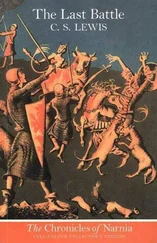Reynaud and Borotra—both of whom were acquainted with the new guests—braved the snow to greet the men. [101] 16. Daladier, Prison Journal , 252.
They were stunned, however, by de La Rocque’s haggard appearance. Barely fifty-nine, he looked twenty years older and was having difficulty standing. The seventy-one-year-old Clemenceau, on the other hand, seemed to be both healthy and fascinated by his new surroundings. As he shook hands with Reynaud, Clemenceau smiled slightly and said, “So, Paul, another adventure, eh?” [102] 17. Čučković, “Zwei Jahren auf Schloss Itter,” 30.
That Clemenceau could describe imprisonment in an Austrian castle as an “adventure” says much about his earlier life. Born November 24, 1873, in France’s Pays-de-la-Loire region, he was the third child of physician-turned-politician Georges Clemenceau. Something of a hellion in his youth, Michel bounced from school to school in Paris until his exasperated father—who would ultimately twice be France’s prime minister—finally had enough and packed his fifteen-year-old wild child off to study with a tutor in Zurich. The boy soon settled down and in 1894 graduated from the Swiss city’s Agronomy Institute with an engineering degree and a remarkable fluency in German.
With lucrative interests in a variety of businesses, by 1914 the forty-one-year-old Michel Clemenceau seemed set to enjoy his early middle age—but then he became one of the millions of Frenchmen called up as World War I loomed. On August 21, 1914, his unit encountered a formation of German lancers; Lieutenant Clemenceau was hit by a bullet from an enemy’s pistol but managed to kill the man before losing consciousness. After an extended convalescence Clemenceau was promoted to captain, and he finished the war as a decorated battalion commander.
By the late 1930s Clemenceau was a prosperous entrepreneur with his hand in a variety of profitable businesses. Following Germany’s September 1, 1939, invasion of Poland, the sixty-five-year-old volunteered for military service. Clemenceau’s distinguished World War I record and political connections won him a major’s commission despite his age, and he was assigned to the army’s foreign-intelligence branch, the Deuxième Bureau. [103] 18. Literally the Second Bureau, the organization tracked the strength, capability, and disposition of potential enemies, while the Premier (First) Bureau compiled the same information for French and allied forces.
Briefly detained by the Germans following France’s surrender, he was released and returned to Paris.
Though a longtime admirer of Pétain, Clemenceau opposed the aged general’s collaboration with the Germans, and his views drew the attention of the Gestapo. In November 1940 Clemenceau convinced his wife to leave France for America, but he stayed. His political connections kept him safe from official retribution until May 1943, when Gestapo agents arrested him. He spent several months in French prisons, and, on August 31, 1943, he was transferred to Schloss Eisenberg, a castle-turned-VIP prison in Czechoslovakia. Clemenceau held up well despite poor food and spartan conditions; unlike de La Rocque, he maintained a relatively optimistic attitude throughout his imprisonment. He was therefore able to accept the sudden transfer to Schloss Itter with a calm self-possession that prompted Reynaud to note that Clemenceau’s arrival brought the castle’s other VIP prisoners “the reassurance of his unshakable confidence.” [104] 19. Reynaud, Carnets de captivité , 269.
Sadly, Clemenceau’s traveling companion, de La Rocque, could boast neither health, nor self-confidence, nor optimism.
FRANÇOIS DE LA ROCQUE, JANUARY 9, 1944
While Reynaud and Borotra were stunned by de La Rocque’s appearance upon his arrival at Schloss Itter, they were even more shocked that he was a prisoner of the Germans.
Until his arrest ten months earlier de La Rocque had been a member of the Vichy government, a confidant of Pétain, and a man widely viewed both at home and abroad as one of France’s leading fascists. While the fact that someone with de La Rocque’s right-wing credentials could so quickly fall from political grace certainly surprised both Reynaud and Borotra, they would have been thunderstruck to learn that de La Rocque was also the head of a resistance movement that funneled information to Britain’s intelligence service.
Born October 6, 1885, in Lorient, Annet-Marie-Jean-François de La Rocque de Sévérac was the scion of one of France’s noble families and, according to one biographer, [105] 20. Jacques Nobécourt, author of Le colonel de La Rocque , published by Librairie Artheme Fayard in 1996.
the hereditary viscount of Chateaubriand. The young man attended St. Cyr military academy and in 1907 was commissioned a lieutenant of cavalry. In North Africa he commanded a mounted company that saw action against Moroccan guerillas. Severely wounded during a 1916 battle with insurgents, he refused medical attention and continued to lead his unit until a relief force arrived.
Cited for bravery and promoted, de La Rocque returned to France for convalescence. Once again fit, he was assigned to an infantry unit and spent the remainder of World War I on the Western Front. Twice promoted and much decorated, he ended the war as a lieutenant colonel. Upon his retirement from the army in 1928, he was lauded as a highly effective leader concerned with the welfare of his troops.
Given his strict Catholicism, aristocratic lineage, and intense patriotism, it’s no surprise that de La Rocque’s postwar politics veered toward the right. At thirty-eight he became the vice president of the extreme right-wing Croix de feu veterans’ group, which advocated the replacement of France’s admittedly chaotic form of parliamentary government with an authoritarian regime that would emphasize the “traditional French values” of work, family, and country.
As an articulate and decorated former soldier, de La Rocque soon became the Croix de feu’s primary public spokesman, and in 1931 he became its president. Under his leadership the group’s ranks swelled, and he was courted by every important right-wing politician in France. In 1936 the nation voted into office the broad left-wing coalition known as the Popular Front, and one of the new government’s first acts was to outlaw the various right-wing organizations. De La Rocque shrewdly responded to the threat by transforming his group into a political party, the PSF, and announcing he would work within the very parliamentary system he had long criticized.
De La Rocque’s decision to renounce the violent overthrow of the government put him at odds with other, overtly fascist groups. He was also excoriated by those organizations for his opposition to Germany’s increasing military might and expansionist policies, as well as for his support for the modernization of France’s armed forces. Right-wing and authoritarian de La Rocque might have been, but he also remembered the carnage France had endured at Germany’s hands in World War I.
When war erupted in 1939, de La Rocque called for all PSF members to rally to the nation’s defense. Even when it became obvious that the German blitzkrieg would result in a French defeat, de La Rocque opposed any armistice or outright surrender. But following France’s fall, he concluded that Pétain was the only man capable of providing France with the postarmistice leadership and stability the nation so desperately needed. De La Rocque threw his support—and that of his PSF—behind Pétain’s government. Nevertheless, de La Rocque’s subsequent refusal to subjugate the PSF to Vichy’s planned single-party system outraged the regime, and, as early as September 1940, he was telling his followers to respect Pétain but display “absolute reserve” toward the Vichy government. [106] 21. Ibid., 193.
Читать дальше












